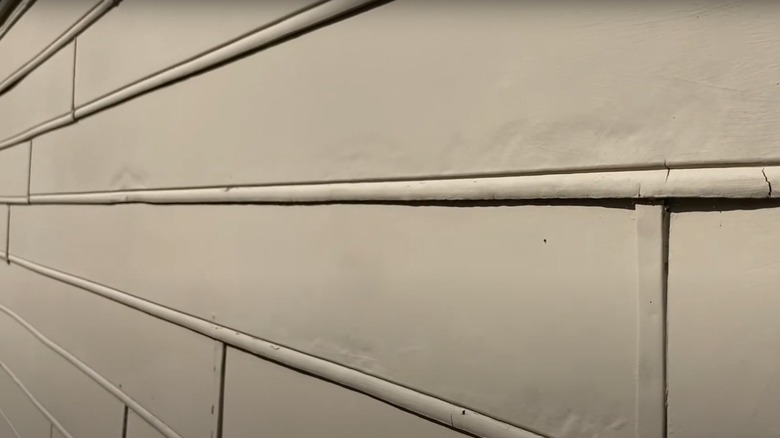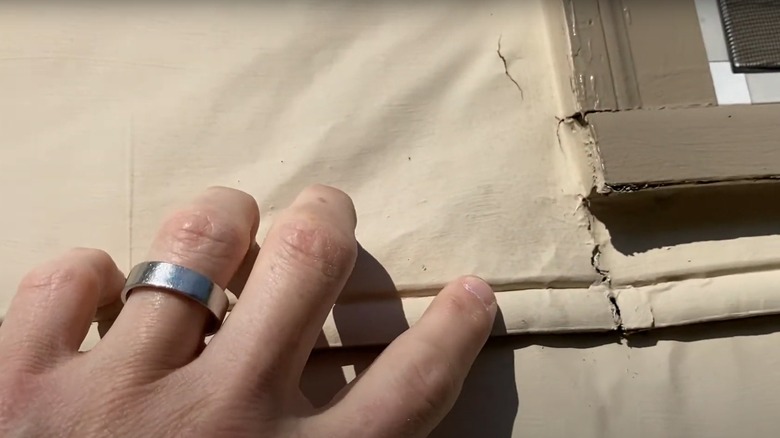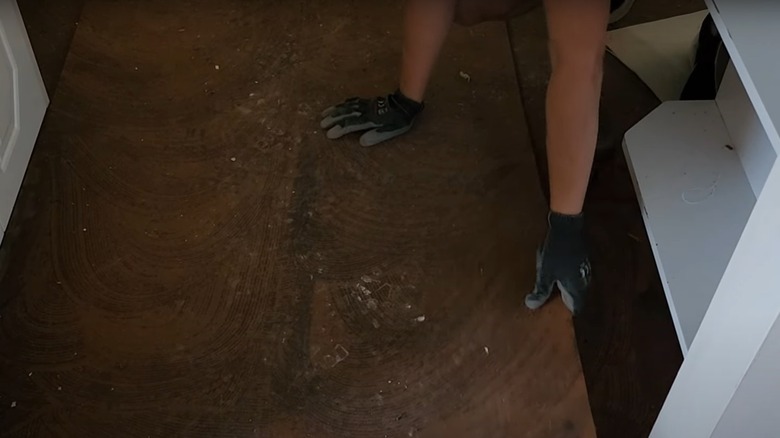What Masonite Is & How It Might Be Used Around Your Home
When you are looking at the different types of house siding to consider for a new installation, or if you are replacing large amounts of siding around your house, you may have heard of Masonite and the low cost that it offers. Also called pressboard, hardboard, or high-density fiberboard (HDF), Masonite is an engineered wood product that uses compressed fibers and resin to create a thin board. It is actually a brand name for this type of product, which was invented a century ago. The Masonite International Corporation still exists today, but it's primarily a door manufacturer and it no longer focuses on making Masonite hardboards.
Although siding is a common use for Masonite, it may appear in other areas around your home. In a construction setting, the workers may use hardboard over the top of finished flooring to protect it during a long renovation when moving heavy equipment, when creating a significant amount of debris and dust during demolition, or when walking across it with dirty work boots. The construction workers may use duct tape to secure the hardboards together so that no dust leaks between them during the work.
The Masonite hardboards are a popular selection for doing craft work, such as creating a backdrop for a model train set. Some people purchase Masonite or another brand of hardboard that's been made into a type of pegboard for your organizing needs, such as hanging tools in a garage or workshop.
Can I use Masonite siding on my home today?
Hardboard (or Masonite) siding continues to be made today, so you could choose to use it on your home. Masonite looks like wood siding, but it has fewer maintenance hassles, making it a popular choice among some homeowners. It's also cheaper than natural wood for this purpose. You can find this type of siding that's pre-painted or pre-stained, which cuts down on the amount of work you need to do after installation.
One of the benefits of using Masonite siding is that it's resistant to rot and insect damage, which can be a problem with natural wood. It weighs less than some other materials, which simplifies the installation process. It's also easier to maintain than some other materials used as siding, like natural wood, which means you'll spend less time and money on upkeep. You do have to repaint or re-stain it after several years though.
Some of the drawbacks of Masonite siding include the possibility of suffering water damage and warping over time, should the installation process not occur correctly. If you fail to care for it and repaint it promptly, water damage also could occur. Masonite hardboard siding is not readily available everywhere, so your contractor may struggle to find it in certain parts of the country, which may drive up the cost. Some contractors might not be qualified install it, so they could try to steer you toward another, more popular siding product.
What to do if you find Masonite inside your older home's floors and walls
Although Masonite is far more common to find as exterior siding, it's sometimes installed inside older homes. Hardboards featuring the Masonite brand appeared in homes in the 1930s, often in bathrooms. Builders might apply them as a wall covering with wallpaper or paint over the top. After World War II, these hardboard products sometimes appeared houses as a wall panel, usually gray in color with a visible wood grain, or as subflooring.
What should you do if you find Masonite in your home's walls or subfloors during a renovation? Most contractors would recommend taking it out and replacing it with drywall, cement board, or plywood on the floor. It is possible that the Masonite in your house has asbestos, although this is rare. Masonite did not include asbestos in the creation of the product, but the manufacturer did use equipment in the manufacturing process that included asbestos. If you suspect asbestos in any area of your home, professional testing is an important thing to consider before you gut your home.
If you have Masonite siding on the exterior of your house, it does not contain asbestos. However, Masonite siding boards made in the 1980s and 1990s could suffer from water damage, leading to mold formation and swelling. Because this particular siding was recalled years ago, most people replaced it, so you probably won't still see it on your home currently.



